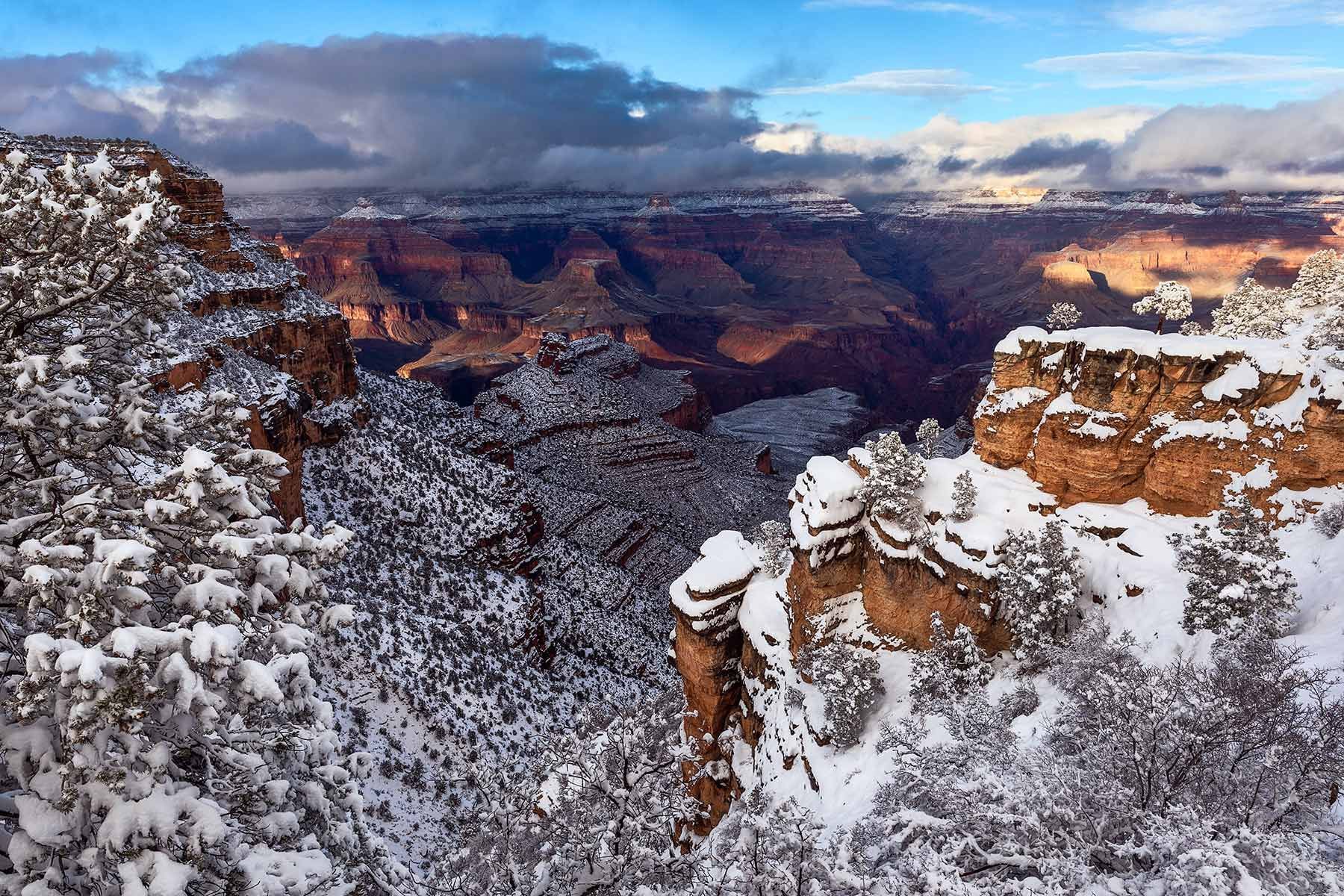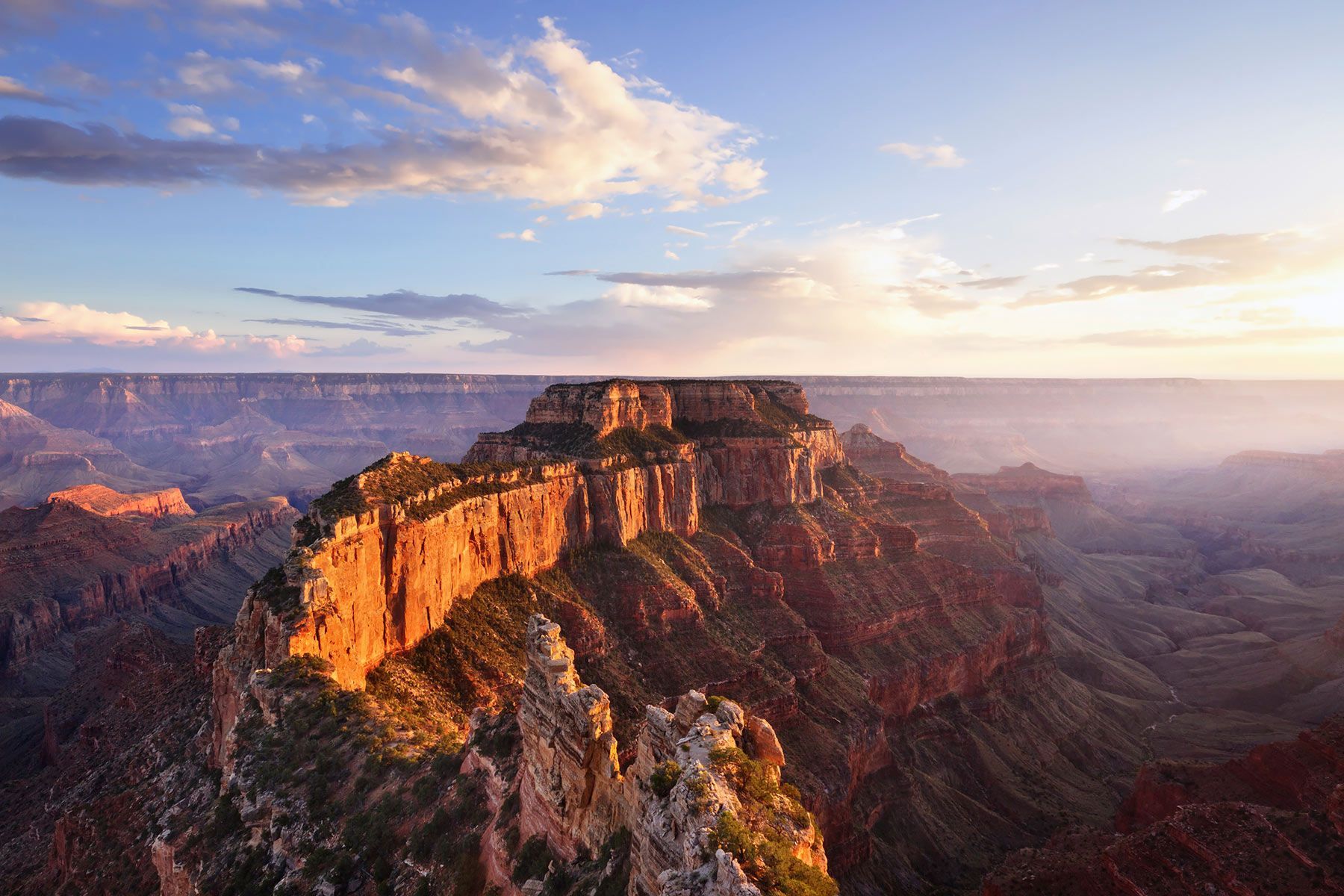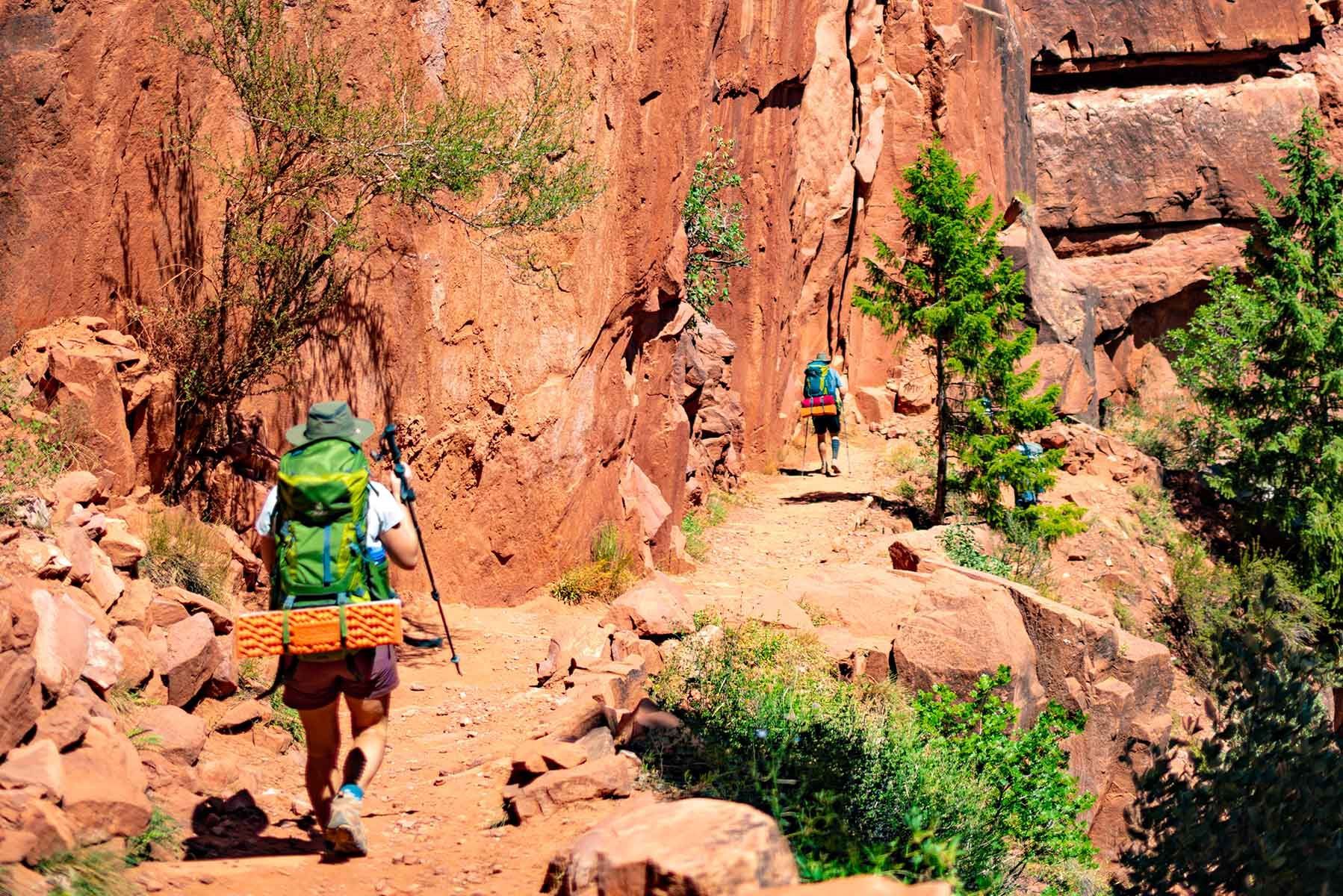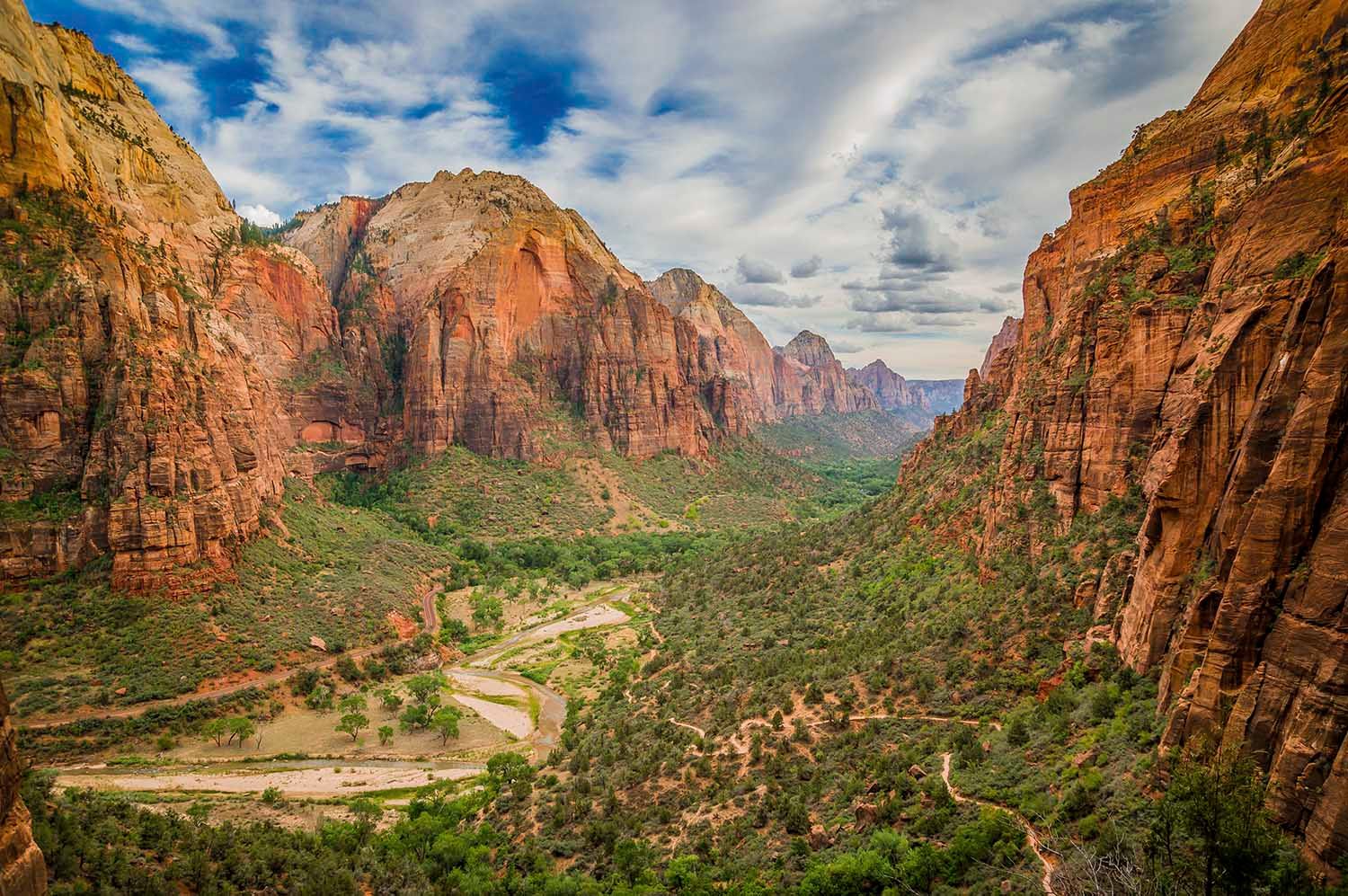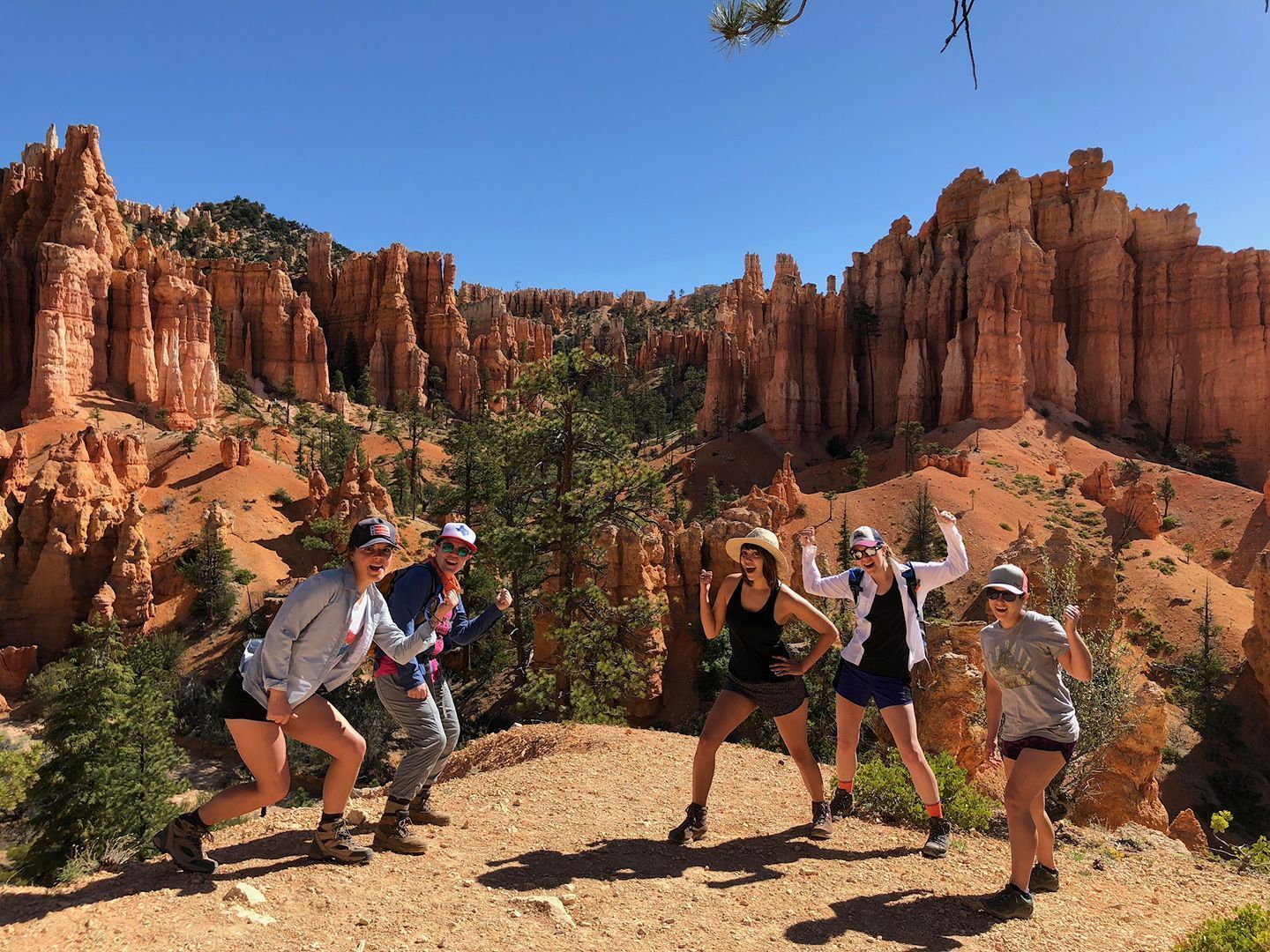Grandview Trail Grand Canyon
Grandview Trail Grand Canyon
The
Grandview Trail on the
South Rim of the Grand Canyon offers one of the most historic and rugged routes into the park’s remote backcountry. While most visitors head for the well-known Bright Angel or South Kaibab Trails, this lesser-traveled path leads hikers into a quieter, more adventurous corner of the canyon — one originally carved not for tourism, but for mining.
Key Takeaways
- The Grandview Trail offers a historic and rugged adventure into the Grand Canyon’s backcountry, originally carved by miner Pete Berry in the 1890s to access his Last Chance Mine on Horseshoe Mesa.
- Hiking the Grandview Trail is best suited for experienced or guided hikers due to steep grades, exposed sections, and uneven terrain caused by erosion and rockslides.
- Panoramic views from Coconino Saddle and Horseshoe Mesa reveal some of the most breathtaking inner canyon vistas, rewarding hikers with unmatched perspectives of the Colorado River and canyon depths.
- Horseshoe Mesa serves as both a scenic and historic highlight, featuring remnants of mining cabins, campsites, and connecting trails that lead deeper into the canyon for seasoned backpackers.
- Water is scarce on the Grandview Trail, making it essential for hikers to carry all their water and check with the Grand Canyon Backcountry Information Center for updated conditions before starting their trip.
- For a balance of challenge and comfort, guided trips such as the Women’s Grandview Loop or Basecamp Adventures provide expert support, safety, and a deeper appreciation of the Grand Canyon’s natural and cultural heritage.
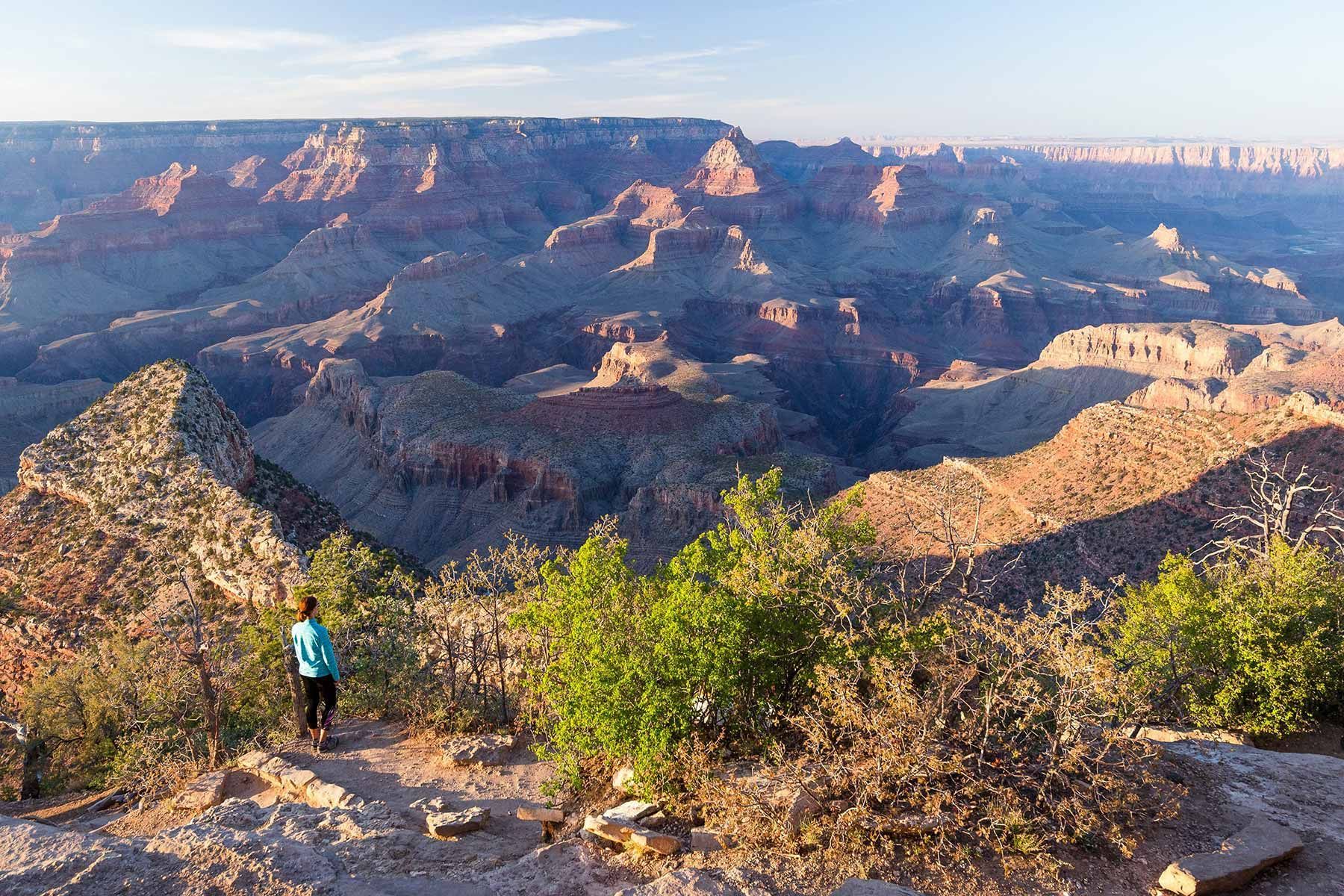
A Trail Born from Mining History
Long before modern hikers explored Grandview, the Hopi Tribe gathered copper ores from the canyon walls and collected salt that naturally leached from ancient sandstone near the Colorado River. By the late 1800s, miners discovered valuable copper veins and began developing routes deep into the canyon to extract ore.
The Grandview Trail was constructed in the 1890s by miner Pete Berry, who used it to reach his Last Chance Mine on Horseshoe Mesa. Over 14 years, pack mules carried hundreds of tons of copper up to the rim. Remnants of this mining era — from rusted equipment to old crockery and shafts — still line the trail today, offering a tangible glimpse into a time before Grand Canyon became the world-renowned destination it is now.
Though steep and challenging, this historic path rewards those who take it with solitude, beauty, and a sense of timelessness found nowhere else in the park.
Trail Overview
Building the Grandview Trail in the 19th century was an impressive engineering feat. Following natural fault lines and contours, the trail was reinforced with cobblestone ramps and log cribbing that still cling to the canyon walls today.
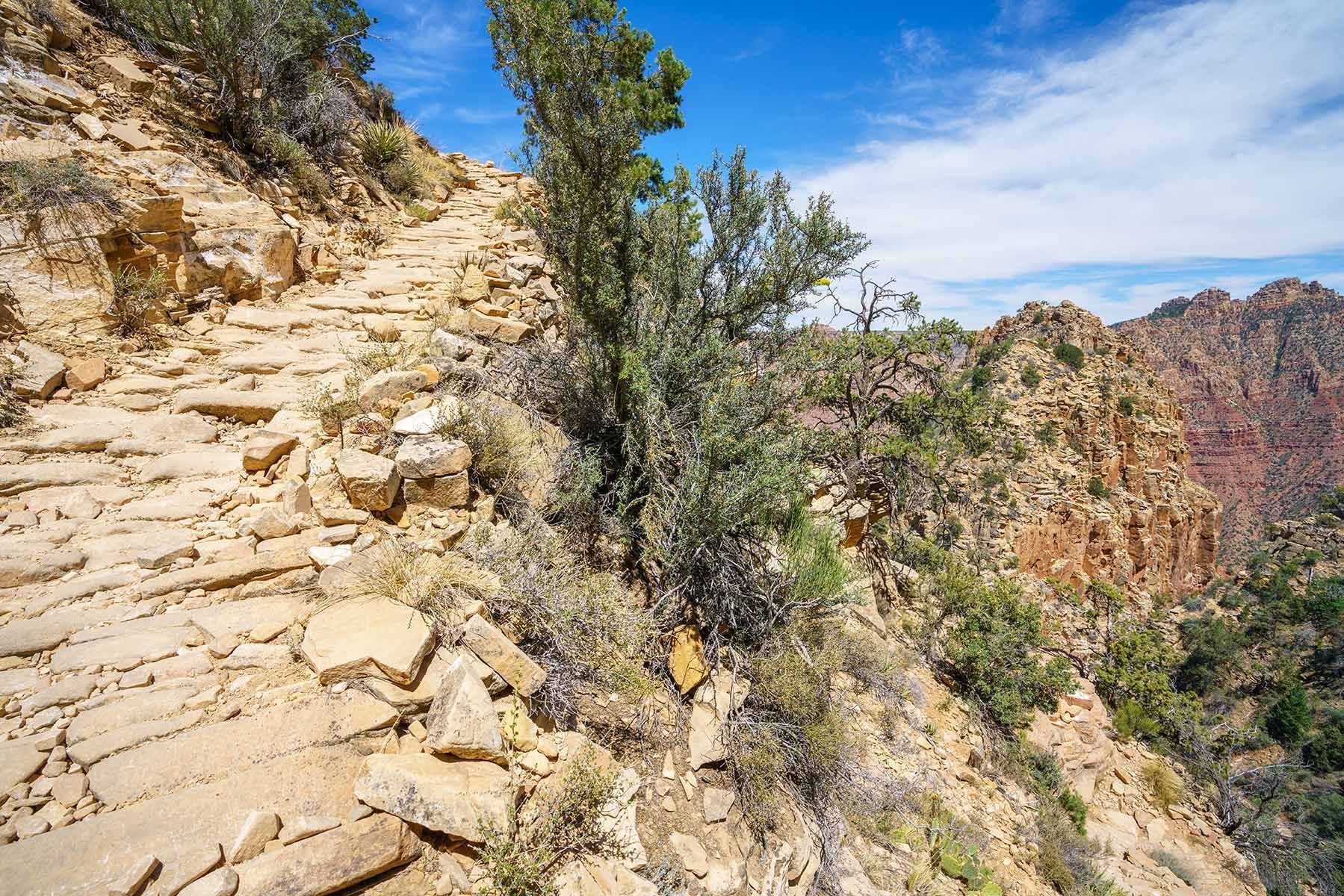
However, this rugged terrain demands respect. Heavy monsoon rains in 2021 and rockslides from 2005 left several sections rough and uneven. While much of the trail has been repaired, hikers should still expect areas requiring careful navigation.
Because of its exposure and steep grade, the Grandview Trail is best suited for confident hikers — or those traveling with an experienced Grand Canyon guide.
For a supportive and adventurous guided experience, our women’s Grandview Loop backpacking trip is an excellent choice.
Incredible views are achieved on the Grandview Trail to Horseshoe Mesa. A sliver of the distant Colorado River is glimpsed near the top, jaw-dropping depths are witnessed from Coconino Saddle, and inner canyon vistas from Horseshoe Mesa are unbeatable.
Unforgettable Views
Panoramic vistas unfold at every turn. Near the trailhead, hikers catch a glimpse of the Colorado River shimmering far below. At Coconino Saddle, the canyon opens in breathtaking depth and color. And from Horseshoe Mesa, the sweeping inner canyon views are unmatched — a true reward for the effort it takes to get there.
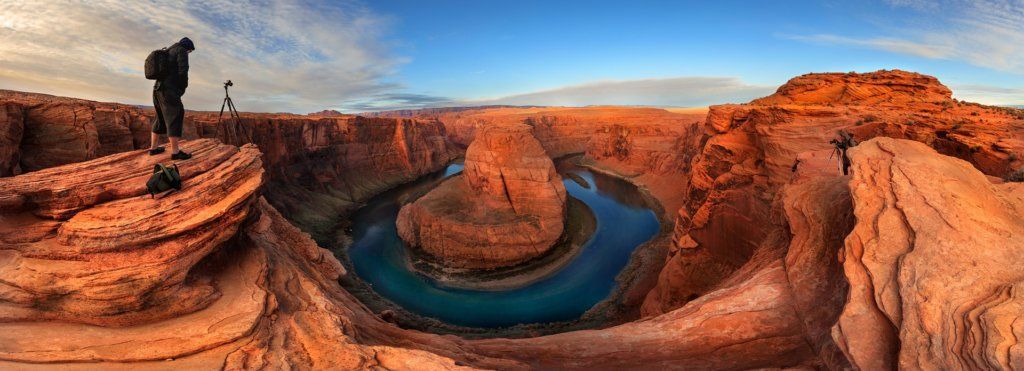
Exploring Horseshoe Mesa
Perched dramatically within the canyon, Horseshoe Mesa is both a scenic and historic destination. Campsites are available here, surrounded by the remains of mining cabins and shafts that tell stories of the canyon’s industrious past.
Short, scenic walks along the mesa’s east and west arms reveal endless views — ideal for sunrise photography or quiet reflection.
From the mesa, seasoned backpackers can continue deeper into the canyon via three connecting trails leading to the Tonto Trail, roughly 1,200 vertical feet below. These routes are extremely rugged and suitable only for experienced hikers with a backcountry permit.
Water and Preparation
There are no reliable water sources along the Grandview Trail. Hikers must carry all their water for the trip. Seasonal sources, such as Cottonwood Creek (to the west) and Miner’s Spring (also known as Page Spring, to the east) and may occasionally hold water, but they cannot be depended upon and are difficult to access.
Before your hike, consult the Grand Canyon Backcountry Information Center for the most up-to-date water conditions and trail advisories.
Why Hike the Grandview Trail
For those seeking a more challenging and less-traveled adventure, the Grandview Trail to Horseshoe Mesa is an extraordinary experience.
It’s a journey through both natural wonder and human history, a place where rugged beauty, solitude, and the legacy of the Grand Canyon’s mining past come together.
Whether you explore it as a demanding day hike or as part of a guided backpacking trip, Grandview Trail promises a deeper connection to the canyon and a perspective few visitors ever see. For those who prefer comfort with adventure, our Basecamp Adventures combine day hikes with cozy camp settings at the canyon’s edge.
Frequently Asked Questions
Discover the Grandview Trail — a historic, rugged route descending from the South Rim into the Grand Canyon’s remote backcountry, offering solitude, mining relics, and breathtaking views.
How difficult is the Grandview Trail in the Grand Canyon?
The Grandview Trail is considered strenuous and best suited for experienced hikers. It’s steep, exposed, and includes rough sections from erosion and past rockslides. Proper footwear, trekking poles, and plenty of water are essential for a safe journey.
How long is the Grandview Trail?
The Grandview Trail descends about 3 miles (4.8 km) to Horseshoe Mesa, with an elevation change of roughly 2,500 feet (760 meters). The route feels longer due to steep grades, switchbacks, and uneven terrain.
Where does the Grandview Trail start?
The trail begins at Grandview Point on the South Rim, approximately 12 miles east of Grand Canyon Village along Desert View Drive. The parking area offers panoramic views before you begin the descent.
Can you camp on the Grandview Trail?
Yes. Designated campsites are available on Horseshoe Mesa. A backcountry permit from the Grand Canyon Backcountry Information Center is required. These sites provide a remote, historic setting amid old mining ruins.
Is there water available on the Grandview Trail?
There are no reliable water sources along the trail. Hikers must carry all their own water. Seasonal sources like Miner’s Spring or Cottonwood Creek may hold water occasionally but should never be relied upon.
What makes the Grandview Trail unique?
Unlike the more popular Bright Angel or South Kaibab Trails, Grandview offers solitude, mining history, and raw canyon beauty. Built in the 1890s by miner Pete Berry, it still features cobblestone ramps and remnants of the Last Chance Mine.
What can you see from Horseshoe Mesa?
From Horseshoe Mesa, hikers enjoy stunning 360-degree views of the Grand Canyon’s inner depths, the Colorado River, and layered rock formations. It’s also rich in mining artifacts, adding historic context to the dramatic scenery.
Do you need a permit to hike the Grandview Trail?
No permit is needed for day hikes. However, overnight trips or camping on Horseshoe Mesa require a backcountry permit, which can be obtained through the Grand Canyon Backcountry Information Center.
When is the best time to hike the Grandview Trail?
Spring and fall offer the most comfortable temperatures. Summer heat can be extreme, and winter may bring icy or snow-covered sections near the rim. Always check weather and trail advisories before heading out.
Are guided hikes available on the Grandview Trail?
Yes. Several outfitters, including women-focused adventure groups, offer guided trips that include support, gear, and safety expertise. These are ideal for hikers seeking both challenge and companionship on the trail.
Four Season Guides, 506 N Grant St suite o, Flagstaff, AZ 86004, United States
+19285251552
35.19653980, -111.62000560

